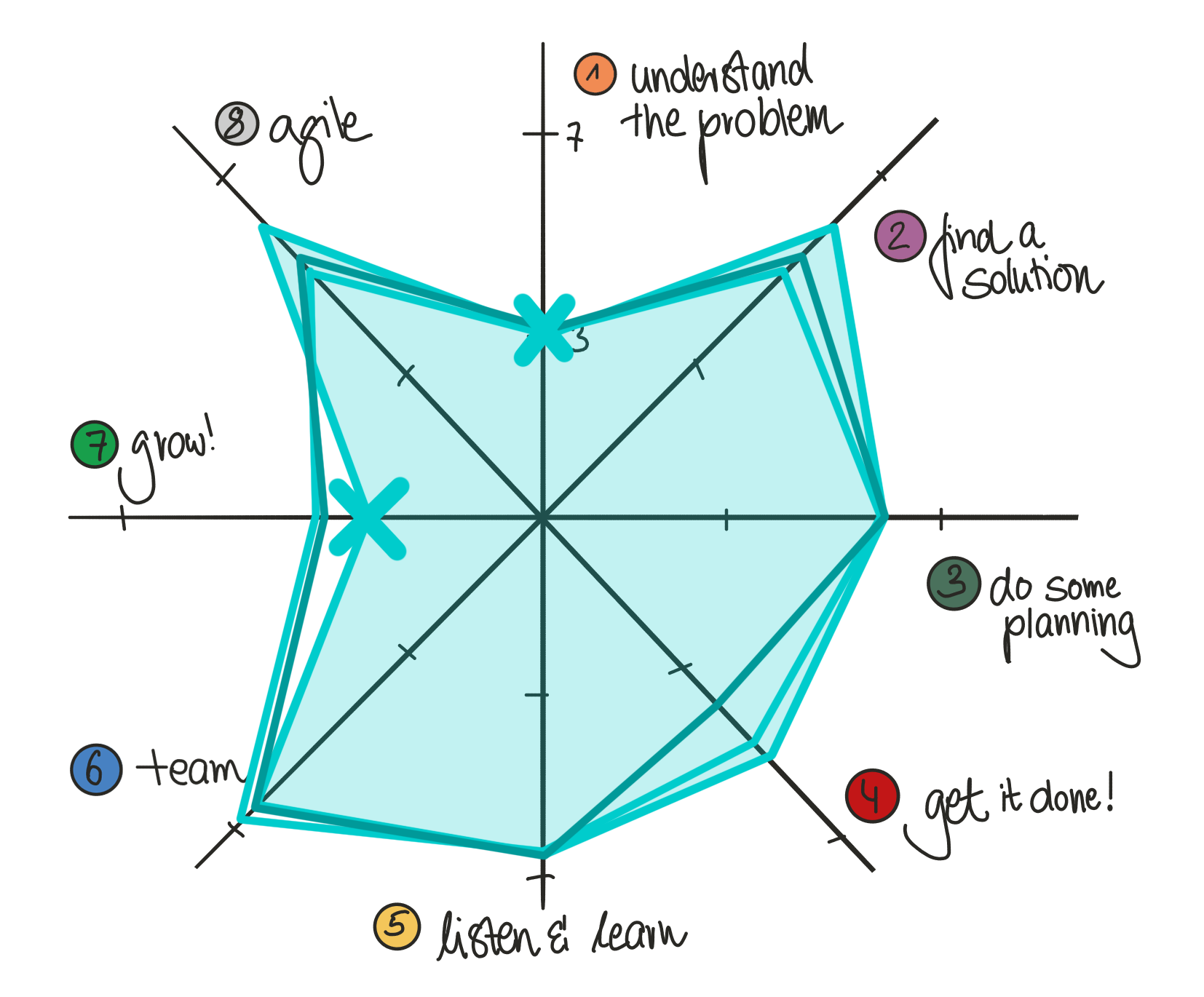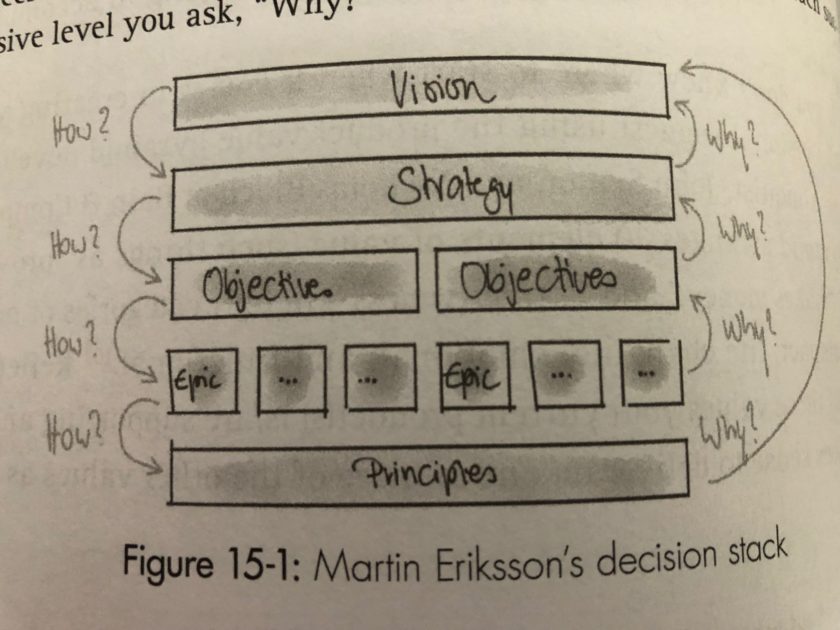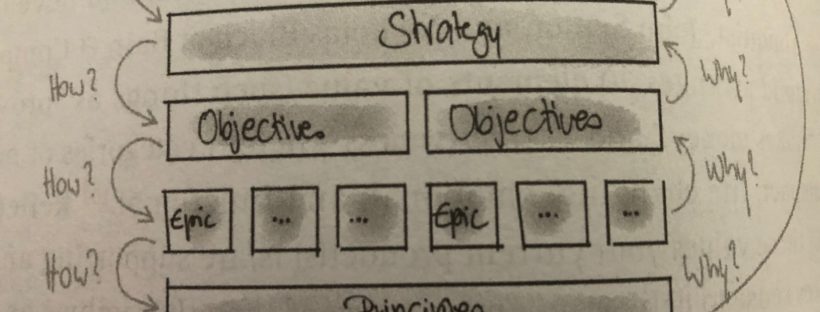★★★★★
Strong Product People: A Complete Guide to Developing Great Product Managers by Petra Wille
When I was offered the opportunity to become Head of Product Management at my current job, I looked for resources to help inform my approach.
I couldn’t have dreamed up a better or more practical resource than Petra Wille’s Strong Product People. The book is simply packed full of useful, tactical, real-world advice.
The book is broken into five parts:
- What Product Managers Do – Define Your Good
- Manage Your Team – Find Your Voice
- Find and Recruit Good Product Managers – Attract the Best People
- Develop Your Existing Product Team – Train Your Excellence
- Create the Right Environment – Build a Great Culture
From the book’s foreword:
“… Strong does not contain every single topic that you need to know to be an ace HoP [Head of Product]. For example, I don’t provide advice on how to handle your CEO, or how you as HoP can nail stakeholder management, or how to best prepare for a board presentation. Strong focuses on the people part of an HoP’s job – the things you need to do to help your PMs develop and succeed in their careers.” (bolding mine)
Page 9
The book includes illustrations throughout. Honestly, the illustrations are my only pet peeve with the book; it’s fine that they’re hand-drawn, but sometimes they can be difficult to read. Petra draws her 1’s like upside-down V’s, which took me a little while to figure out! But that’s a minor point.
I absolutely love how well-researched this book is, and how references are sprinkled throughout the book in footnotes and at the end of each chapter. If you want to take a peek at Petra’s references, you can see them listed here: https://www.strongproductpeople.com/book/further-readings.
I’ll share one lesson from each section that I found particularly useful (though it was hard to pick just one!).
Part 1: What Product Managers Do – Define Your Good
Petra talks about the importance of defining what a “good” product manager means to you. She points out that having this definition is key to helping your product managers know where they have strengths and where they need to improve. It’s also important when it comes to hiring.
To “define your good”, Petra suggests the following steps:
- “Define your PM essence”: key personality traits (page 43)
- “Define PM responsibilities, skills, and know-how that matter to you”: This is where Petra’s PM wheel comes into play (page 45). The PM wheel, discussed in more depth on pages 46-48, is a useful tool to help visualize a PM’s strengths against key areas. See image below for an example of this.
- “Add company values and other company-wide factors”: company values and principles (page 45)

Part 2: Manage Your Team – Find Your Voice
One item discussed in this section is how to drive alignment throughout your team.
- “Provide clarity of intent – the underlying thinking of initiatives” (page 130).
- This includes directional clarity, such as is derived from from strategy and vision; situational clarity, provided by the people involved in the conversations; and role clarity
- To assist with role clarity, Petra developed the role definition canvas (see image below)
- This includes directional clarity, such as is derived from from strategy and vision; situational clarity, provided by the people involved in the conversations; and role clarity
- “Ensure discussions on the tricky questions – the ones that need alignment – take place as early as possible” (page 130).
- “Make the results of the alignment process transparent to get everyone on the same page” (page 130).

Part 3: Find and Recruit Good Product Managers – Attract the Best People
In addition to discussing how to find and hire the best product managers, Petra talks about onboarding. Her advice:
“Invest as much time in onboarding your new PM as you do in hiring them.
Make a good first impression: prepare well for their first day (access, whom to contact on arrival, hardware, etc.)
Think about what they need to learn or hear to get their “first educated decision” made as quickly as possible
Make this a program – don’t reinvent the wheel for each person joining! (Involve other people such as peer product people to be their onboarding buddy.)”
Page 183
On a personal note, I’ve found that for team members who are looking for some mentoring/management experience but aren’t ready to fully manage a team member, assigning them as an onboarding ‘buddy’ is a great way for them to get their feet wet in mentoring.
Part 4: Develop Your Existing Product Team – Train Your Excellence
As she explains in the intro to this section, Petra covers the basics so that you’ve got an easy reference at your fingertips. Even if you know how to do something, knowing how to explain it is a different matter, so her summarizing of basic concepts is helpful.
One chapter focuses on helping your product managers (or yourself) create a product vision and set goals.
“Product vision, strategy, goals, and principles provide a framework – the guardrails – for making decisions faster, and I would argue, better.”
Page 198
Petra noted that thinking of strategy as a framework for helping people make better decisions is less intimidating, and I completely agree!
“In addition to making better decisions faster, these elements… make decisions easier because everyone has a clear focus on what they should be working on. They help you filter the noise, data, and questions you are looking into – or the assumptions you are creating – during discovery and delivery. And they help you pick the next, best, action.”
Page 198
In this chapter, Petra introduces a number of frameworks built by others to help assist. My favorite is the one from Martin Eriksson, which does a great job of explaining how the different pieces fit together:

Part 5: Create the Right Environment – Build a Great Culture
One chapter deals with how to encourage change from within. Fostering bottom-up change can be done with the following steps, according to Petra:
- “Start small and make sure it works” (page 349). Make sure results are positive from one team before expanding the way of working to other teams
- “Create a success story” (page 349). Ensure the team can explain how they’ve achieved their goal.
- “Find the ally” (page 349). Another team reaches out, your team reaches out to another team, or you reach out to a team to encourage them to try it.
- “Ask them to share their success story” (page 349). As new teams adopt the approach and have success, ask them to share their story.
- “Start to convince the org” (page 349). Get the support of upper management once you have a proven success.
- “Help everyone succeed” (page 350). Once you have management support, figure out a rollout plan.
Conclusion
If you manage product managers, or want to be in that position in the near future, I highly recommend checking out this book. It would also be worthwhile for anyone who needs to “manage up,” as you could bring suggestions to your manager.
I’m curious to hear the opinion of anyone else who has read the book. Did you find it useful? Was there something you disagreed with?
Next Up
Next up, I plan to read Continuous Discovery Habits by Teresa Torres.
If you’ve got other book or article recommendations for a design / product management leader, I’d love to hear them!

Excellent review, Jackie. You explained not just what’s in the book but why someone would want to read it.
Continuous Discovery Habits is spoken of extremely highly by my boss (a VP of Product) so consider that a second-hand endorsement of your ‘next up’ plan.